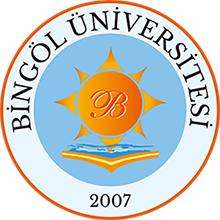حاشية ملا محمد الكردي على الأنواركـتــــاب الــصــــلاةتـحـقـيـق و دراســـة
Abstract
ÖZET:
Yusuf el-Erdebîlî’ye ait el’Envâr li-a‘mâli’l-ebrar isimli eser, başta ilmi icazet almak isteyen âlimler ve fakihler olmak üzere âlimlerin geleneksel klasik medreseler ve camilerde ellerinden düşürmedikleri eserlerden biridir. Fakihler bu eseri el-Envârü’l-kebîr olarak isimlendirmişlerdir. Yüksek ilmi konumundan dolayı ifadelerini ilim taliplerine kolaylaştırmak için onun üzerine birçok haşiye yazılmıştır. Şirvânî ve Hâcî İbrahîm haşiyeleri de bunlardandır. Konumuz ise Haşiyetu Molâ Muhammed el-Kürdî ismi ile bilinen onun bir başka haşiyesidir.
Türkiye Cumhuriyeti Bingöl Üniversitesi’nde devam eden iki senelik ders döneminden sonra oranın ilgili öğretim üyeleri birçok öğrenciye Haşiyetu Molâ Muhammed el-Kürdî eserini tahkik etme konusunu vererek bu eseri onların arasında bölüştürdüler. Danışman hocam Doç. Dr. İbrahim Özdemir, bu haşiyeden namaz bölümünü konu olarak çalışmamı önerdi ve kabul ettim. Ondan sonra bu eserin asıl yerini bilmediğim ve elimde istinsah edilen sadece bir nüsha bulunduğundan dolayı kütüphane, kaynaklar ve mahtûtların fihristlerinde ona dair bilgileri araştırdım. Bu araştırmanın sonucunda girişte zikredeceğimiz gibi Allah’ın yardımıyla dört diğer nüshasını da buldum.
Eserin farklı nüshalarını bulduktan sonra onları okumaya başladık. Onlardan bir tanesini ( (أkarakteri ile belirledik ve onu bilgisayar ortamına geçirerek diğer nüshaları onunla karşılaştırdık. Tezimizi, tahkik ve dirase olmak üzere iki bölüme ayırdık. Dirase kısmında Molâ Muhammed el-Kürdî’nin ismini, nispetini, lakabını, künyesini, ailesini, aşiretini, eserlerini, ilmi hayatını, haşiyede izlediği yöntemi ve haşiyede beslendiği kaynakları ele aldık. Çalışmanın aslı olan ve tahkike ayırdığımız ikinci bölümde ise metnin tahkiki, ayet ve hadislerin kaynaklarını belirlemeye çalıştık. Bununla birlikte mümkün olduğunca söz konusu haşiyede yer alan âlim ve yerlerin biyografisini verdik ve kitabın başından sonuna kadar müellifin referans gösterdiği kaynakları dipnotta belirttik. Ondan sonra sonuç ve kaynaklara yer verdik. ABSTRACT:
The book titled el’Envâr li-a‘mâli’l-ebrar authored by Yusuf el-Erdebîlî is one of the bedside works for scholars, especially scholars who want to acquire scientific knowledge, in conventional madrasas and mosques. The canonists named this work al-Enwar al-kebir. Due to its high scientific level, several annotations were written on the book to facilitate its expressions for scientific scholars. The annotations by ġirvânî and Hâcî Ibrahim Hashiyas are among these. The topic of the present study was another annotation titled HaĢiyetu Molâ Muhammed al-Kürdî.
After the two-year course period at Republic of Turkey University of Bingol, professors divided the work HaĢiyetu Molâ Muhammed al-Kürdî among the students for analysis. My advisor Assoc. Prof. Dr. Ġbrahim Özdemir suggested that I study the prayer section in this annotation and I and accepted it. Then, since I did not know the exact location of this work, and since I only had a copied version, I searched the libraries, resources and related indexes for information on the book. As a result of this research, as I mentioned in the introduction section, I found four other copies with the help of Allah.
After finding different copies of the work, we started to read them. We identified one of them with the letter (أ) and compared it with other copies after transferring it to computer environment. We included two sections, namely investigation and reading, in our thesis. In the reading section, the name, relativity, moniker, personal record, family, tribe, works, scientific life of Molâ Muhammad al-Kürdî, the method and resources he utilized in the annotation were discussed. In the main section of the study, namely the investigation, the manuscript was reviewed, and the resources of the verses and hadiths were addressed. Thus, as much as possible, the biographies of the scholars and places mentioned in the annotation were presented and the resources cited by the author from the beginning to the end of the book were quoted in footnotes. Then, the paper was finalized with conclusion and references sections.
Collections
- Temel İslam Bilimleri [161]

DSpace@BİNGÖL by Bingöl University Institutional Repository is licensed under a Creative Commons Attribution-NonCommercial-NoDerivs 4.0 Unported License..













